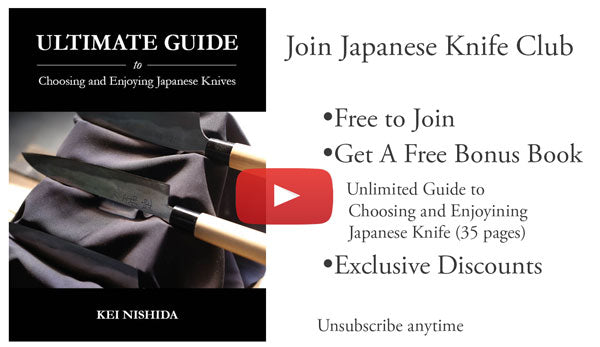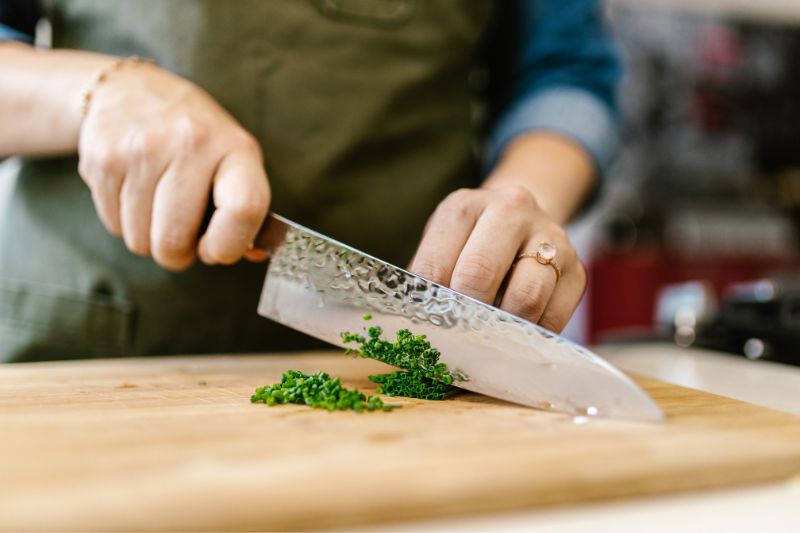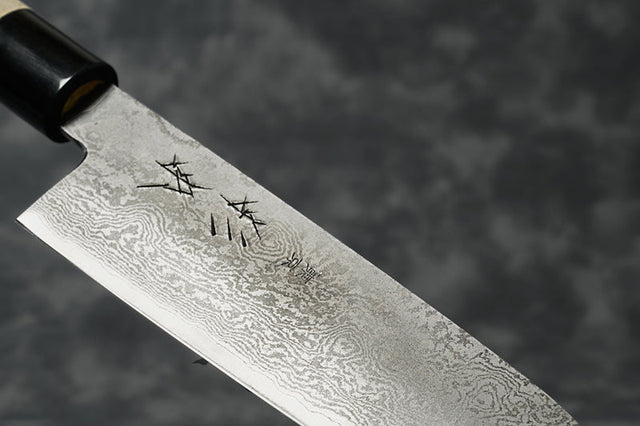There is an endless debate between chefs, food afficionados and lovers of fine steel about where the finest blades are forged and it’s “daggers out” when steel connoisseurs of differing opinions meet.
A Slice of the Market
Even in this world of high tech, gadgets and automation, knives remain the central tool for food preparation and a focal point of a kitchen. The global annual market for kitchen knives alone was valued at USD 1.30 billion within the USD 7.5 billion kitchenware market, according to data provider Data Bridge Market Research. The industry meets keen-edged competition and the industry forged its place as an economic pillar in certain regions.
Sharp Styles
You do not need to be a master chef to appreciate having a quality knife in your kitchen. If you have ever shopped for a quality chef’s knife, you will notice that, even with exposure to other traditions across the globe in modern times, knives from a region still tend to resemble each other and share the same general traits. This is because the blades have developed through the local history, metalsmithing techniques handed down from masters to apprentices across generations, and unique local character.

Living on the Edge
The culinary cutlery from Thiers, France is not only prized by French chefs, the UK is renowned for Sheffield blades, steel from Northern Italy’s Maniago has found its way into kitchens around the world, Damascus has forged its place in legend, China’s Yangjiang has made a deep slice in the global knife industry and even Seattle, following America’s pioneering spirit, has created its own unique style. Nonetheless, German-style knife tradition has strongly influenced the development of most knife producers in Europe and no city in Germany is better known than Solingen. Meanwhile, Japanese blades remain the most prized from the East and traditionally hail chiefly from three knifemaking centers, Sakai, Osaka, Sanjo City in Niigata, and Seki City in Gifu, with the latter having the greatest international renown.
The Right Tool
In each tradition, there are many diverse styles of blades that serve myriad purposes and are specialized to specific tasks, so to best compare and contrast the craftsmanship and traits of European and Japanese knife making, we will focus on the chief tool in every chef or foodie’s arsenal, the chef’s knife.
East Meets West
The distinction between the knives from the rival traditions lies beyond mere difference in aesthetics and style. Their form evolved to match their unique components, construction and function. The distinguishing traits between the two lies primarily in the hardness of the steel and the edge angle, which, leads to distinctions in application, durability and function.
The Western blade is the heavier and more durable option and it is also the most versatile but that doesn’t always make it the better choice. The Eastern knives excel where finesse and control are called for.
Western Heft vs. Oriental Finesse
Western chef's knives are generally made of softer steel and provide a lot of heft with a thicker blade and have a curve that is ideal for a rocking chop or a straight cut. The weight and shape make a western blade versatile and featuring a full tang, steel running through the handle to the base of the butt, these knives are highly durable. Adept at cutting meats and well-suited for those tougher tasks like chopping, dicing, and hacking at harder, dense vegetables, slicing through tendons or even tackling smaller bones. A fine western chef’s knife is the workhorse of the kitchen.

Most Japanese knives have straight blades which are thinner and can be made sharper, they are ideal for control and precision cuts like slicing, trimming, delicate mincing, julienne and cutting fish, tomatoes and other soft foods. Since straight Japanese knives do not allow an easy rocking cut, repetitive tasks like dicing or chopping can be more difficult.
In the Mix
Steel is created when iron is mixed with carbon. The chief steelmaking cities typically have the characteristics of natural water resources, rich coal deposits and of course are rich in iron. Solingen, for example, lies in the Ruhr Valley where nearly 90 percent of German bituminous coal is located. Meanwhile Japan has very little in the way of coal and developed steel making by way of charcoal from the mountainous nation’s vast forest lands.
A Tale of Two Steels
The resulting process for forging Japanese steel lead to developing a high-carbon steel which is stronger and stiffer than lower carbon steel so can be made thinner and take a sharper edge and hold it longer but it is more brittle and must be used more gently. The ability to cut more precisely and with the grain of meat and especially fish, Japanese blades are credited with enabling a better texture and taste as well as exceptional presentation.
With a softer metal, Western blades must accommodate by forging a thicker blade. These weightier blades are versatile and durable but will need to be regularly honed and frequently resharpened, but the thickness of the metal allows significant regrinding of the edges.
Leading Edge
It is not just the carbon rating of the steel and the shape of the blade that differs. The western knives feature a bolster between the hefty blade and the full tang which, as its name suggests, supports the blade as the meeting of the blade and tang is the weakest point. This further adds to the weight and durability and some people enjoy the solid feel of a heavy knife but it can be cumbersome if you have many kitchen tasks. Japanese knives have a tang that tapers into the handle making it lighter and tend not to have a bolster, further reducing the overall weight and allowing fingers to rest close to the blade for precise control.
A Different Angle
The bevel, which is the part of the blade that is sharpened, is a major difference between Western and Japanese knives. German steel typically can take an edge bevel of 20 degrees and are dual-bevel, sharpened on both sides of the blade, making for an overall 40 degree edge. High-carbon steel typically is beveled to 15 degrees but some blades can take a bevel of up to five degrees. To enhance the sharpness Japanese knives tend to be single-bevel, sharpened on only one side of the blade.

Two Sides of the Coin
The dual-bevel softer steel is more all-purpose and the cutting edge is centered so it is easy to control the cut. The cutting edge on single-bevel blades is naturally off-center so if you are not used to this style of knife it may take some practice to adeptly control the cuts. There are both left- and right-handed blades to meet your personal style.
While you will need to hone and sharpen a German blade more frequently, if it ever gets chipped or scored, the thicker blade means the edge can more easily be resharpened. The edge on Japanese knives may only need to be sharpened a few times a year but must be cared for more gently and still should be honed to a fine edge regularly.
Hi-Tech Hybrids
Knife makers have also developed technology to try and harness the best of both worlds. Stainless steel can provide the hardness of a Japanese high-carbon steel to be lighter and take an exceptional edge without being brittle like the steel blades so they offer a hybrid. While these are a nice development, there are still many reasons to own a hand-crafted forged blade in either style.
Choose Wisely
Is a Western and Japanese chef’s knife the right choice to add to your arsenal. Each knife has its own forte and use. If you have not experienced a Japanese knife, you might explore the satisfying beauty and precision of a Japanese kitchen knife.
Get Free Bonus Books

Sign up for free to the Japanese Knife Club to get advice and exclusive articles about how to choose Japanese Knives, and tips and tricks for using Japanese knives.
About the author
Kei Nishida
Author, CEO Dream of Japan
Certification: PMP, BS in Computer Science
Education: Western Washington University
Kei Nishida is a passionate advocate of Japanese craftsmanship, a writer, and the founder and CEO of Japanese Knife Co., Japanese Green Tea Co., and Japanese Coffee Co., all part of Dream of Japan.
His journey began with a mission to introduce the world to the exquisite flavors of Japanese green tea. Through Japanese Green Tea Co., he pioneered the import of premium tea grown in nutrient-rich sugarcane soil, earning multiple Global Tea Champion awards. He then expanded into the world of coffee, launching Japanese Coffee Co., the first company to bring Sumiyaki charcoal-roasted coffee to a global audience.
With a deep appreciation for Japanese artistry and tradition, Kei turned his attention to one of Japan’s most revered crafts: bladesmithing. Through Japanese Knife Co., he made handcrafted katana-style knives, created by a renowned katana maker, available outside Japan for the first time. These exceptional knives embody centuries of samurai sword-making expertise, blending tradition with modern functionality for chefs and collectors alike.
Kei’s journey continues as he uncovers and shares Japan’s hidden treasures—one sip, one blade, and one legacy at a time.























